Stand up paddle (SUP) surfing while barely a decade old has seen significant growth over the past few years. It is amazing that after all these years of ocean activities, there is still room for a sport to grow so quickly. Brian Keaulana, Dave Kalama, Laird Hamilton, Bruce DeSoto and Mel Puu are among the people credited with the recent emergence. The concept of standing on a board (or canoe) and paddling goes back to the ancient Hawaiians where they paddled as a means of transportation. When not in use, the board would remain on the beach while the rider travelled inland on foot. In the 1950’s the Waikiki Beach Boys stood up on their boards during surf lessons to keep a better perspective and to take pictures. Well-known Beach Boy John ‘Pops’ Ah Choy used his signature yellow HECO hard hat to keep personal items inside while navigating the waters. Stop by and ask some of the old-timer Waikiki Beach Boys why Pops wore the hard hat, and you’re sure to hear some great stories.
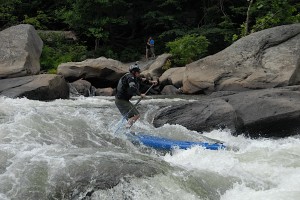
There are a few reasons why the sport has taken off so quickly, and with its rise, the sport is finding its niches. Unlike traditional surfing, SUP is a full body workout with no impact like running – the motion quickly becomes comfortable and natural with some practice. Many people have taken up the sport for this purpose alone – to exercise and travel in a fun and safe manner. SUP races have become very popular with over 50 races already in Hawaii. Check out www.wetfeethawaii.com for a complete SUP race schedule. With this evolution of the sport, SUP has grown on an international level from Lake Tahoe to Australia to Japan to Brazil and now all the way to Michigan. SUP is emerging in white water rivers, lakes, small rivers and open waters worldwide.
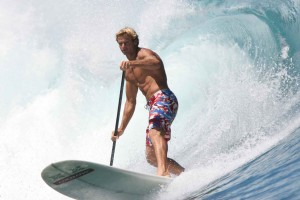
SUP is changing the way we surf too. The large board and paddle provide a distinct advantage over other surfers trying to catch waves. The SUP surfer can line up further outside and catch the largest and best waves by paddling into a wave at a much greater speed before the wave has formed. So the guy with the short board sitting inside usually ends up watching the SUP and longboarders gobble up all the waves. Also with SUP, the surfer’s field of vision is far greater than surfers sitting on their boards allowing them to read sets better and find the best position in the water. SUP surfers tend to take advantage of their abilities and hog the waves leading many in the surf community to resist SUP. The large board and paddle also bring additional safety concerns to already crowded surf spots. But stand-up paddle surfing in an evolution of the sport leading to new ways for humans to have fun in the ocean so lets not resist it too hard. On the other hand there are skeptics who believe its merely a fad waiting for its turn to die out – a scenario that is hard to believe.
Getting Started
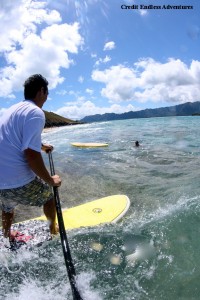
First rule – never paddle out to a surf spot with your new or rented board. You must master the board before attempting this. If you are new to the sport, take a lesson with a reputable surf school or surf shop. It is important to learn the fundamentals first. Many surf clinics are also available on Oahu beaches throughout the year. Here you can test out some boards and talk to industry experts. When you are ready to dig deeper, go online and look up C4 Waterman’s Todd Bradley for great instructional videos, Robert Stehlik of Blue Planet Surf posts detailed information on his Zen Waterman blog, or catch up with Ben Aipa at Ala Moana Surfboards for further industry expertise. If you want to bypass the upfront work and just get out there, that can be safe too if you don’t have your head up your rear. Get some friends, rent some boards and paddle out where there are no surfers or swimmers. Stay away from shallow rock and coral and reasonably close to shore, and you’ll be ok. Stay alert and always keep your site and awareness of the horizon. Tell your friends and family your plans and when to expect you back. When you are ready to start making short trips on your SUP board, talk to the experts before attempting this because with the use of a paddle, SUP technically involves a ‘vessel.’ But the Coast Guard states “If a paddleboard is used within a designated swimming, surfing or bathing area, the Coast Guard does not consider it to be a vessel.”
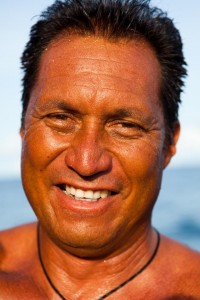
Brian Keaulana
Standing Up For the Right of Way, Standup Etiquette
Common Sense Isn’t So Common
by Scott Bass w/ Brian Keaulana
The growth of standup paddle surfing is undeniable. Cutting edge shapers in Hawaii and California can’t keep up with orders, let alone design evolution. Industry hardgoods players have ramped up production boards, and the used standup boards disappear from Craigslist within hours of being listed. But if your finger isn’t on the pulse of the surf hardgoods industry all you need to do is look in the ocean. From downwind paddlers working out their core to surfers paddling into waves at your local break the growth is obvious. And the stoke is obvious…unless you are NOT one of us.
If this is the case you generally fall into two camps: 1) curious and want to try it or 2) fearful and want to see the whole thing disappear. Either way the growth has and will create some ‘situations’ in lineups regarding etiquette.
In an effort to deflate any of these uncomfortable situations in the water I caught up with C4 Waterman’s Brian Keaulana for some general rules regarding standup paddle surfing etiquette.
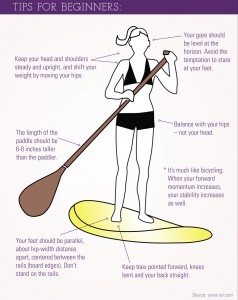
Tips for Beginners
“Okay Scott, but unfortunately common sense isn’t so common,” said the gracious Hawaiian recently at Makaha. “There are idiots on all kinds of different boards: shortboard, longboard, bodyboard, whatever. It’s not the arrow, it’s the indian. These rules can apply to every surfer on one level or another, no matter what you ride. What we are trying to do here is turn a%#holes into assets, I’m familiar with that.”
1) JUST BECAUSE YOU CAN, DOESN’T MEAN YOU SHOULD
Most SUP surfers have no problem getting their wave count. “If you are out there doing laps and not letting others get set waves, you are out of line,” explains Keaulana. “Stop hording and start enjoying.”
2) GET OUT OF DENIAL
If you think the #1 rule (above) doesn’t apply to you it probably does. “First sign of a kook is denial,” says Keaulana. “Denial is the byproduct of the ego, the bigger the ego the bigger the denial. The bigger the denial the bigger the kook.”
3) SEARCH
These boards let you surf places you might not have otherwise surfed so take advantage of that. Search out new frontiers. “Dave (Parmentar) uses the aviation analogy. The birth of aviation meant we could expand our frontiers in a peaceful manner or bomb the shit out of people,” says Keaulana. “Let’s not repeat history. Don’t bomb the s%#t out of people. When the opportunity arises, when a new swell lights up an out of the way spot, attack those new frontiers.”
4) KNOW YOU ABILITY/MASTER YOUR EQUIPMENT
Most surfers who try standup surfing consider themselves fairly advanced. But putting a paddle in your hands is a foreign experience. Believe it. It is not easy. “Go out on your own for a few weeks,” says Keaulana. “Even if you think you are Kelly Slater, you will be humbled. The paddle and the board should be an extension of your body. Until they are, stay out of the way.”
5) SIT IN THE CHANNEL
After catching a wave, instead of paddling back out, kick back in the channel for five minutes. The other surfers will appreciate it. “You are already sticking out like a sore thumb out there,” says Keaulana. “Chilling on the inside for a few sets will keep the swelling down.”
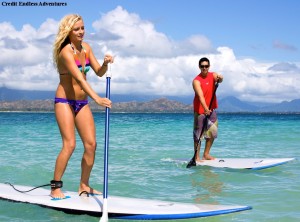 6) COMMUNICATE
6) COMMUNICATE
Call out approaching sets. Use your vertical position as a benefit to others. “Not only do I do that, says Keaulana. “Over here (Makaha) I see sharks, whales. I let others know who and what is sharing their home with us. You call out a big tiger (shark) and people are real happy you’re standing up and seeing things.”
Hopefully some of Brian’s rules will be heeded. Etiquette is such a slippery slope. Often times proper etiquette goes by unnoticed or unappreciated. I’ll let waves go by, hoping the crowd on the inside of me will appreciate my discretion, only to watch surfers with more mouth than ability stumble and grumble their way to frustration. Then they’ll misdirect their frustration born of inadequacy toward the guy having fun, me. Nevertheless, I won’t let underappreciated etiquette efforts stop me from continuing the righteous course and either should you. There are plenty of kooks, let’s not add to the mix.
Inflatable SUPs
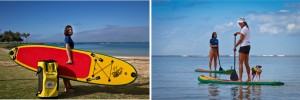
With the growth of SUP, inflatables are also becoming very popular leading many manufacturers to offer inflatable SUPs. Are you a travelling waterman or space challenged? Inflatable SUPs are lightweight and easy to transport, take up little space, very durable, usually more affordable than the standard SUP, and require little maintenance – making them an excellent alternative to the large SUP board. When properly inflated the board will hold its rigidity. Although some performance is lost, the inflatable SUP is a great board for beginner to moderate surfers. Many advanced surfers have inflatable SUPs purely because of the convenient travel. Call Blue Planet Surf at 808-596-7755 and ask about inflatables SUPS.
Stand Up Paddle Boards
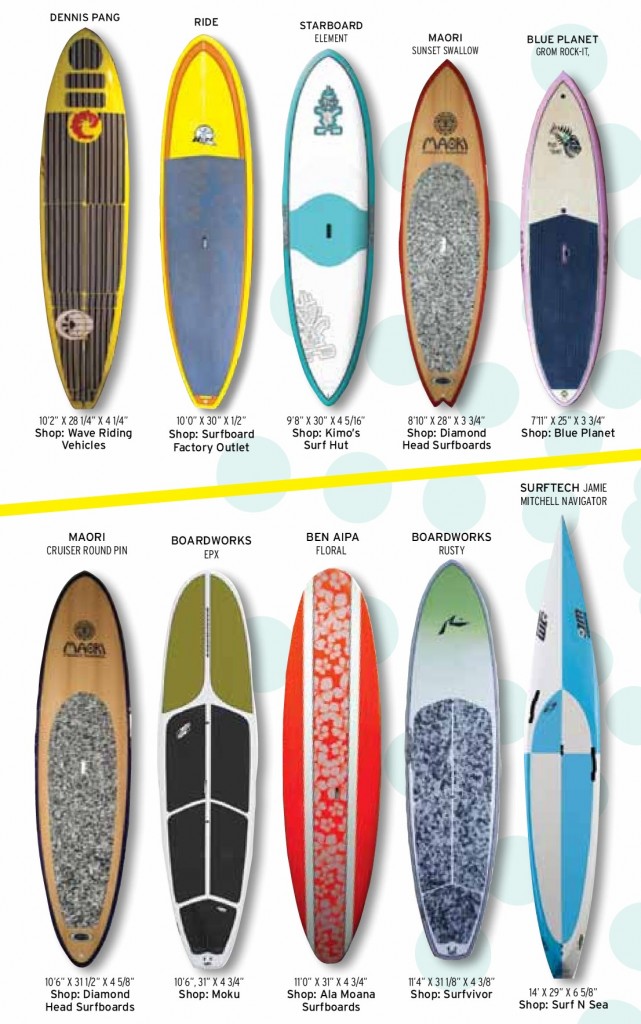
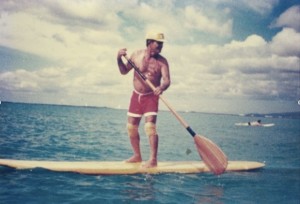
Dear Sir/Madam
Am Mr Jerry Moore and i would like to order STAND UP PADDLE BOARD from you and would like to know if you have some in stock as well as the prices and payment options.Thank you and waiting to hear from you as soon as possible.
Regards!
Jerry..
Aloha — I enjoyed your article. A good intro to SUP and lots of good tips included in it.
One of the things that I’ve noticed is really lacking in our sport is educating parents on children’s SUP safety practices. I just put together a fun little infographic which has an easy checklist that parents can follow to keep their kids safe on the water this summer — maybe it’s a resource that would help some people here.
Here’s the link — if you like it, I’d be so appreciative if you would help me spread the word to parents:
http://www.inflatableboarder.com/kids-water-safety/
Keep up the great work, and happy paddling!